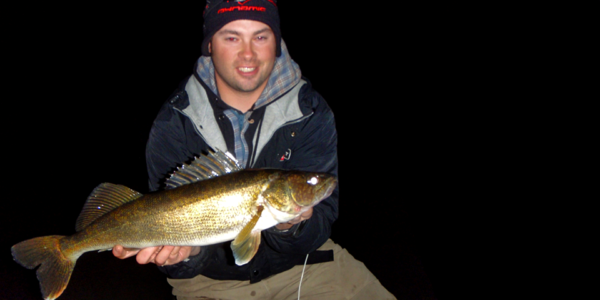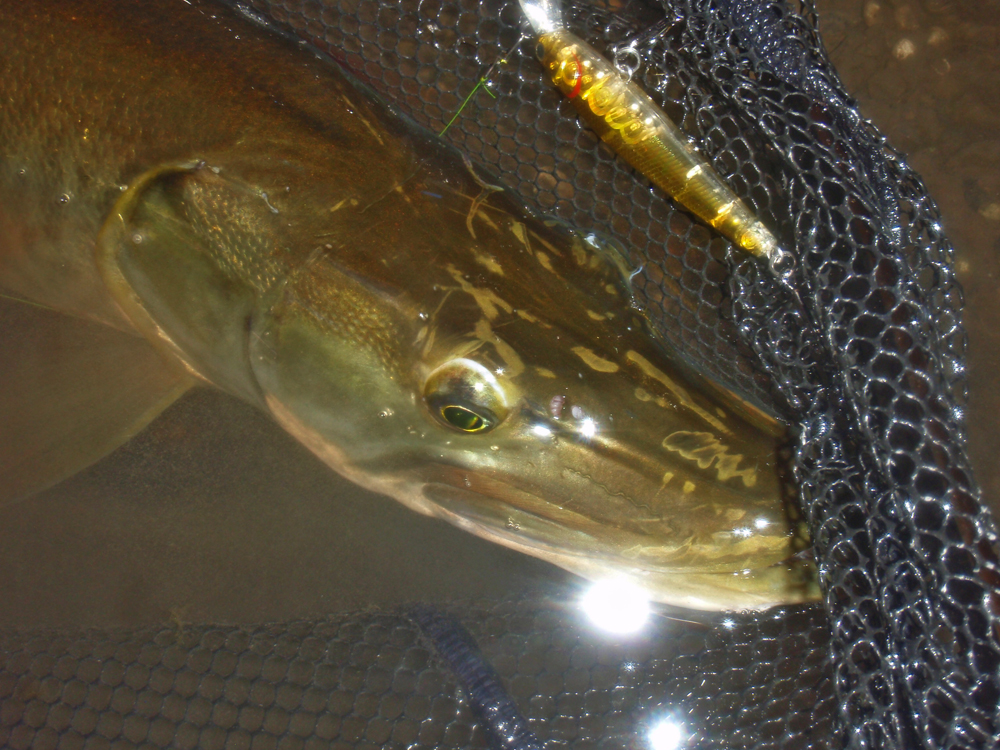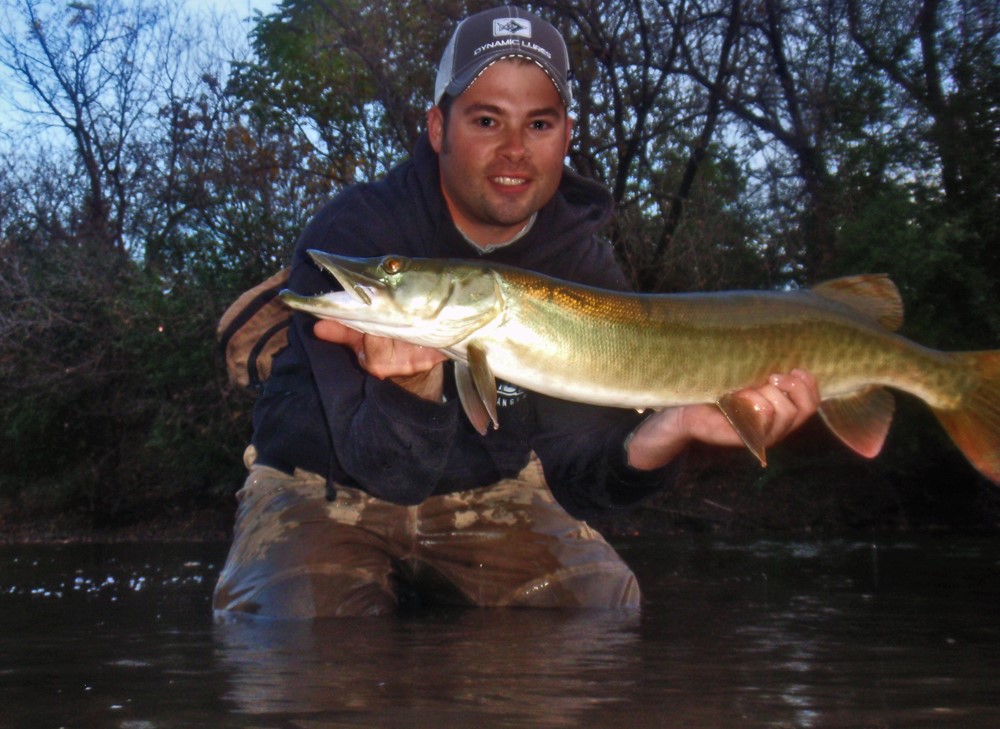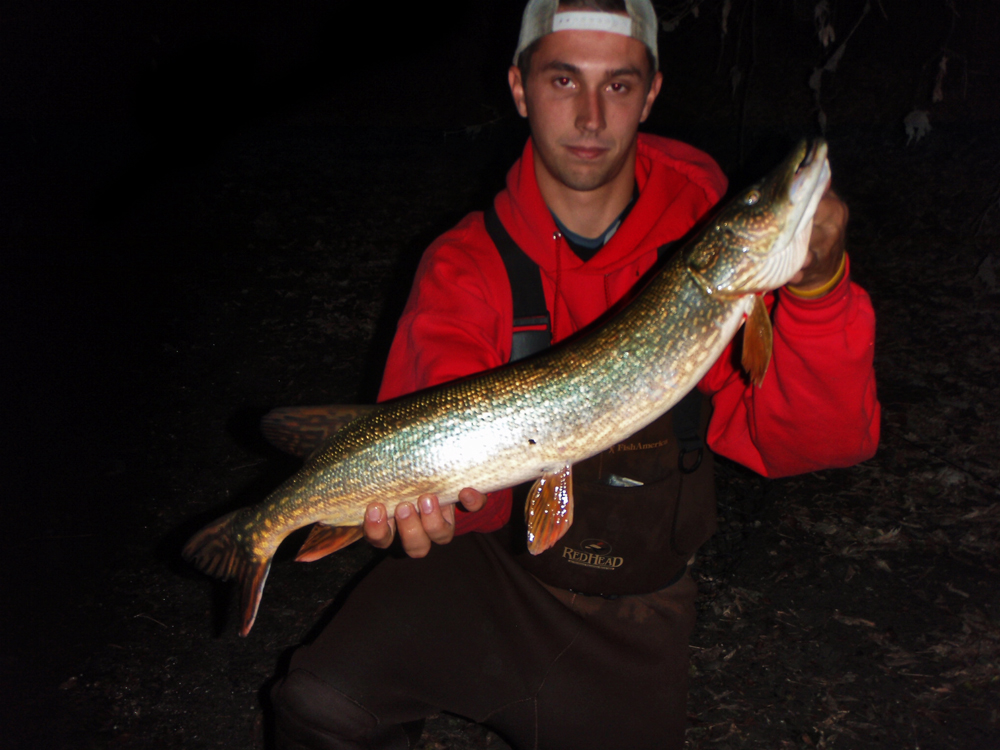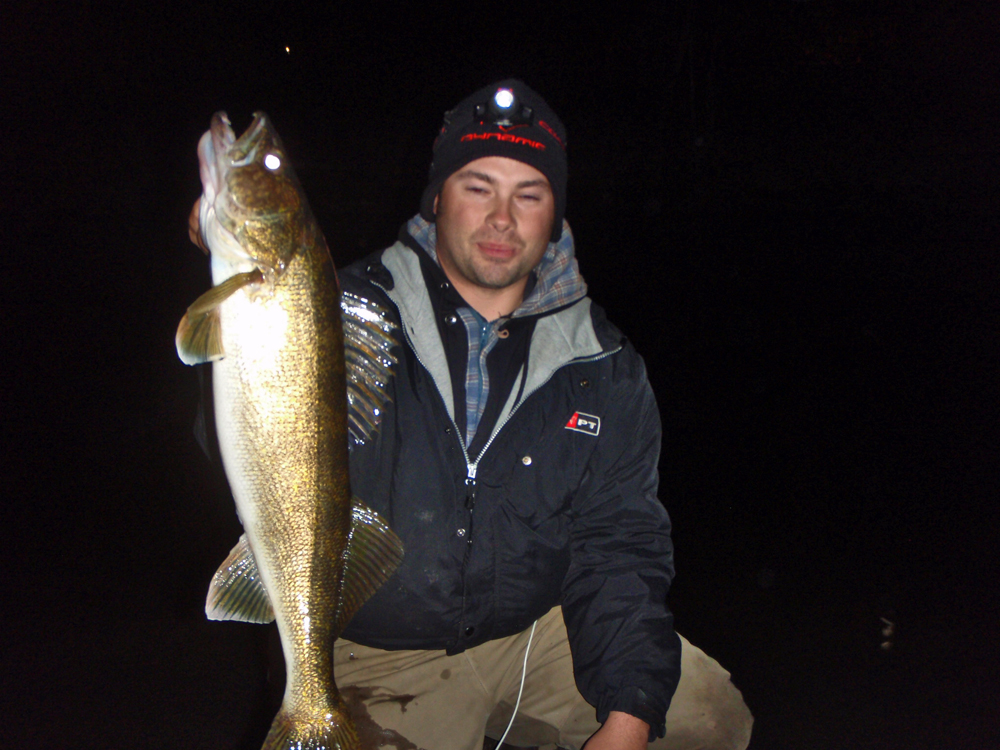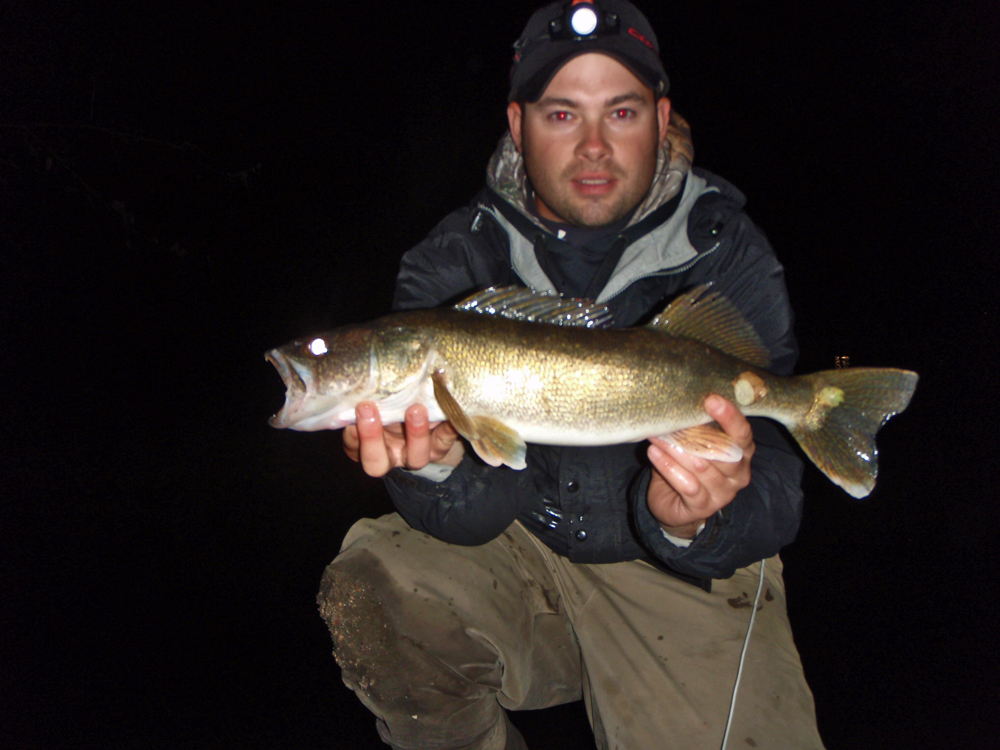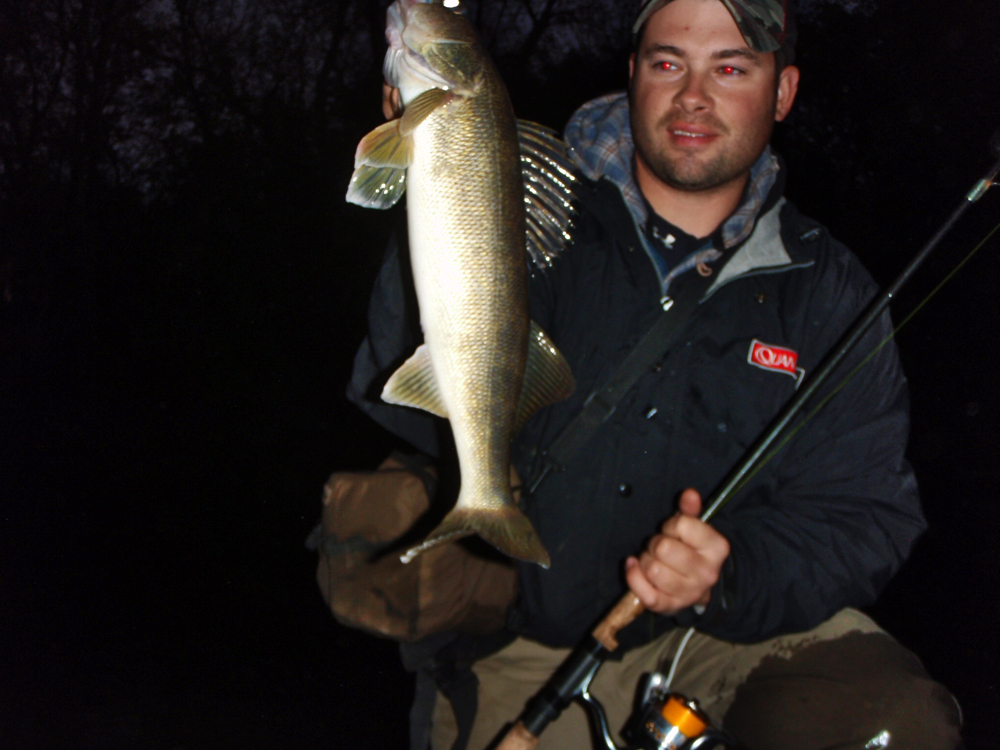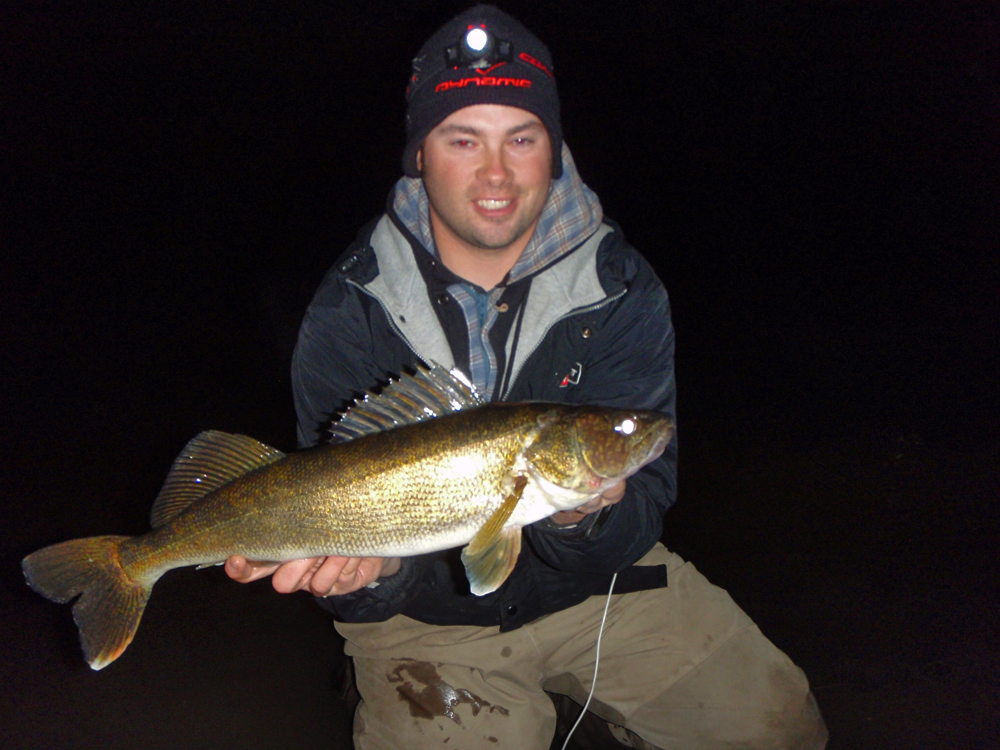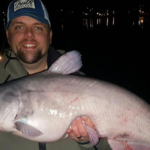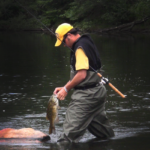By Andrew Ragas
In many large Midwest river systems, walleyes are a prime target during the fall and early winter months. What most of the angling population keeps forgetting about is that small to medium size Midwest rivers are populated with large numbers of unmolested, unexploited walleyes that are only accessed by anglers suited up in their waders. With shad being the primary migratory forage for walleyes here in northern Illinois, these waters are known to rear some monsters!
Since October 31st, I’ve been out on my local flows nearly every evening, solo and with friends. Usually I am fishing at any point from 5 pm until as late as 10 pm. The consistent (and warm) weather along with steady stream flows with comfortable wading conditions has provided an adequate nighttime bite comprised of walleyes to lengths of 25 inches, and other multi-species surprises that includes muskies, northern pike, and channel catfish.
During my last decade of late autumn fishing, more big walleyes are caught right now than at any other time in the year. The fall migration creates higher concentrations of schooling walleyes that are motivated to migrate, for feeding and overwintering purposes.
I get asked and e-mailed frequently of my whereabouts and location. My response always, I’m wading a river. It doesn’t matter which river or where. Nearly every river system in the northern Illinois region contains resident populations of walleyes, which have been established by private and state-funded stocking; Fox, Kankakee, DesPlaines, and some of their tributaries primarily. None of these fisheries are self-sustaining, so catch and release is mandatory for these low density populations. My 15 seasons of late fall river walleyes has provided me knowledge that certain rivers and small flows are obviously better than others under different conditions and scenarios.
So far this month, I’m finding and catching fish from the tail sections of larger pools. Gravel bars with immediate adjacent depth are holding fish too. These are my favorite natural walleye habitats, and are often nothing more than shoreline extensions that have been washed out into a river from floods and high water periods. The hard bottom substrate and depth fluctuations they create often concentrates walleyes downstream of them and sometimes upstream as well. Besides these two, the tailraces of dams along with man-made rock structures and current breaks created by bridges are holding fish also.
The presence of cover such as rocks, boulders, and near shore log jams increases the chances walleyes will use these specific areas. Average depths are fairly shallow, often in the 2 to 4 ft. range whereas the deeper pool that flushes into the tail may be as deep as 5 to 10 ft. Throughout the day walleyes will hold around these locations, but they are more inclined to be active and feed during the evening twilight period, and nighttime hours as they become the top predator in the system.
To locate walleyes during fall on these low density fisheries, I have learned that it’s best to try fishing multiple areas throughout the night rather than rely on solely one area. Under normal river conditions, walleyes are on the move and feeding, and not homing in any specific hole or place. Being a mobile angler in waders has allowed us to intercept fish in spots where their fall migration route offers them ideal feeding opportunities. As our rivers are low density walleye populations, fishing multiple holes and focusing on predictable (high percentage) locations is of utmost importance.
Since fish are on the move, peak fishing is maximized by fishing these high percentage areas due to their likelihood of holding fish at any time. Based on my experiences, spot-hopping until fish are located is the best way to stay productive and gives anglers the best chance at consistently catching them. Fish each location thoroughly for 30 minutes up to an hour before moving on to the next location. Additionally, feeding windows that may be triggered by light levels, lunar phases, water temperature, or specific time of day are clues that tell me when and where I should fish, and for how long. Feeding windows deserve major consideration every night.
Locating and catching walleyes throughout late fall requires keying in on the types of water they use during the current conditions, and also showing them a presentation appropriate for that situation.
My most important pieces of fall walleye tackle is a healthy selection of properly-tuned minnowbaits in larger than average sizes, up to 7 inches long. With a simple but consistent retrieve of slow to moderate retrieve speeds, the minnowbait family of lures draws more fish to strike than anything else.
The hardbait minnow family has grown extensive. Each style I carry in my wading satchel has its time and place at various points throughout my fall river fishing adventures.
Casting an assortment of rattling suspending 3 to 6 inch minnowbaits that includes Rapala Husky Jerks, F11 and F13 Originals, and Dynamic Lures JSpecs, we’ve been catching fish between 16 to 25 inches. During the nighttime hours color makes no difference. But what’s been helping is that our baits are suspending in the low gradient current, big in profile, and are able to be retrieved in ways that the strike zones are maximized. Some nights we’ve been ripping them through the holes and pools and receiving aggressive strikes while other nights we’ve had to entice strikes and weightless pickups with slow retrieves and impatient pauses. We have yet to catch a single fish on plastics but as water temperatures keep cooling down, and unless fishing during daytime, they will eventually be in play.
A properly presented lure is everything for river walleyes at night. A few modifications I make to my minnowbaits are using cross lock snap swivels for quick lure changing. Additionally, I attach split rings to the bait’s eyelet. Floating minnows such as the F11 and F13 Rapalas I fish with do not feature a split ring eyelet directly from the package. Split rings provide the minnow a better wobble under most retrieve speeds, keeps it running tuned longer, and gives hooked walleyes less leverage to throw the bait as they thrash the surface during the fight. I will also swap out the factory VMC hooks, adequate enough, in favor of Trokar’s TK300 treble hooks, whose wider gap hooks more fish and is sharper.
At this writing, my year of fishing is far from over as long as the weather remains cooperative and keeps extending the fall season. As long as water temperatures remain above 40 degrees, I’m still going to be fishing. Walleyes around Chicagoland offers me an ideal challenge every autumn and early winter. Catching the occasional big ones from disregarded and underutilized urban waterways makes for a very unique and rewarding angling experience.


